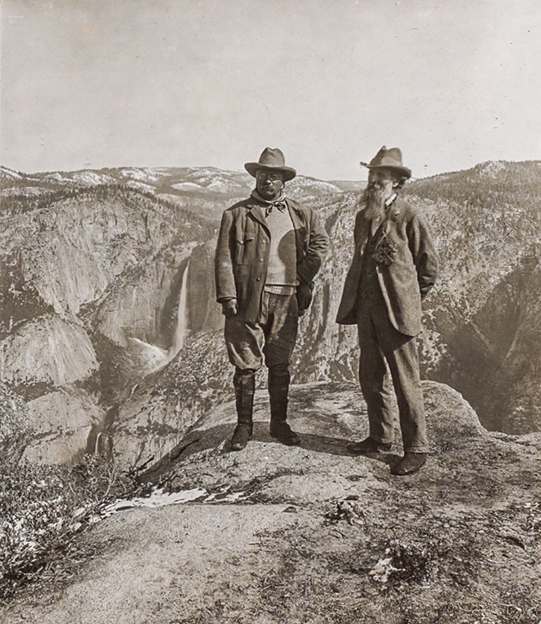1892
The Sierra Club
John Muir (1838–1914)
The mid-to-late nineteenth century witnessed a dramatic increase in global environmental awareness and activism, partly motivated by publicly engaging voyages, writings, and presentations by explorers and naturalists, but also partly by the seemingly boundless growth of cities caused by the Industrial Revolution.
A key player in the early history of environmental activism was the Scottish-American naturalist, philosopher, scientist, and author John Muir. Muir studied geology and botany in college but never graduated, instead succumbing to a spirit of wanderlust that took him on numerous personal voyages of exploration and itinerant work across the US and Canada. Making his way to California in the late 1860s, Muir eventually settled in Yosemite Valley, a spectacularly scenic region of the Sierra Nevada mountain range, where he lived, wrote, and studied the geology. Muir hiked, climbed, and interpreted the landscape; his ideas about the prominent role of glaciers in forming Yosemite were controversial at the time, but were consistent with the growing evidence of past ice ages propounded by Louis Agassiz and others.
Muir recognized that unchecked development, logging, and mining could threaten pristine natural lands like Yosemite and the Giant Sequoia Forest, and so he helped to advocate for state and federal protection of these areas. His influence helped persuade Congress to make Sequoia the nation’s second National Park, and to place Yosemite Valley under California state protection, in 1890. Recognizing the potential power and political influence of like-minded citizens in such advocacy efforts, Muir founded the Sierra Club in 1892 and became its first president. Among the Club’s earliest legislative victories under Muir’s guidance were the creation of Glacier and Mount Rainier National Parks, the official transfer of Yosemite Park to federal control, and the establishment of the National Park Service.
Today, the Sierra Club boasts over three million members, and its mission is “to explore, enjoy, and protect the planet.” As development and commercial activity continue to expand and population continues to grow across the planet, the role of citizen-based environmental advocacy and watchdog groups like the Sierra Club continues to be critical.
SEE ALSO The Sierra Nevada (c. 155 Million BCE), Charting North America (1804), Industrial Revolution (c. 1830), Discovering Ice Ages (1837), Birth of Environmentalism (1845), Deforestation (c. 1855–1870), Natural Selection (1858–1859), Exploring the Grand Canyon (1869), National Parks (1872), Earth Day (1970)
A 1903 photograph of American conservationist John Muir, founder of the Sierra Club, with US President Theodore Roosevelt on Glacier Point in Yosemite Valley, California.
